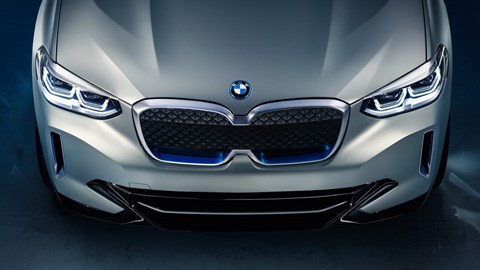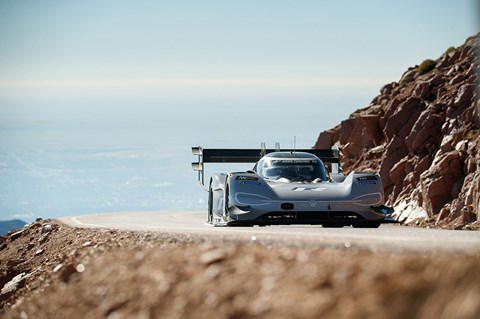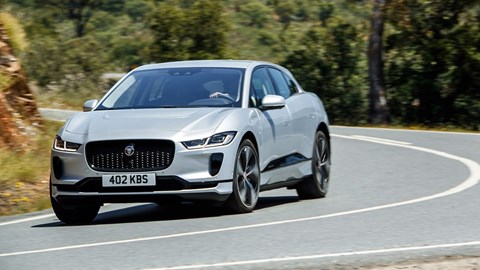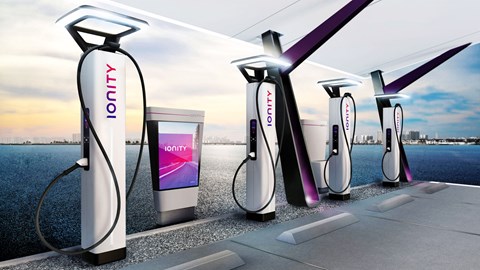► Anthony ffrench-Constant’s isn’t taken with EVs
► Are they pushing design boundaries?
► Are they fun to drive, and easy to charge?
By unhappy happenstance, the last two First Drives I’ve undertaken for CAR have been of the all-electric variety. So, despite the fact that, as a nation, we remain woefully ill-equipped and unprepared to embrace the mechanised hum of another world, brace yourselves – it looks like it’s really going to happen…
And three things leave me less than gruntled about this: Firstly, I distinctly remember being promised that the packaging freedom afforded by electric powertrains would pave the way to an automotive design revolution. Alas, apparently not yet, however.
Best electric cars

Faux radiator grilles would appear to be the predominant feature that distinguish the current crop of EVs from their conventionally horsed brand stable-mates, and the only stylistic element of real note to have surfaced thus far – the rear flanks of BMW’s i8 – has been visited on a machine that doesn’t even boost all-electric drive.
I’m not suggesting that, like Captain Scarlet, we should all suddenly start driving backwards, but when the best looking all-electric road car out there, Honda’s E, owes more to the Golf Mk1 than Jean Paul Gaultier, the words Harder, Could and Try leap to mind.
Secondly, let’s face it – with the undeniable exception of Volkswagen’s I.D. R – in the entertainment stakes, nothing from the burgeoning electric stable even comes close to a bath full of otters.

Excessive battery weight – the antonym to Colin Chapman’s axiom ‘Just add lightness’ – promotes an enthusiasm for roll comparable to a Labrador confronted with fox pooh, and invariably elicits suppression in the form of suspension wound so tight that the car rides like a shopping trolley on a Zydeco washboard.
Lob in steering with all the feel of opening a submarine hatch and drivelines with so little gristle in the blancmange that you can’t be arsed to even pretend to be involved, and the only thing electrifying about your all-electric journey is what’s on the radio and the sweepstake running on which of the children will throw up next.
In fairness, there are a very few exceptions that prove this rule, such as Jaguar’s sharp-suited I-Pace – if only every manufacturer had a black-arts handling guru like Mike Cross. But even the admirable I-Pace serves to reinforce my third issue; wherein range, recharging and the whole big fat zero emissions fib lie huddled under one threadbare blanket.
Recently driving the Jag, I set out on a short round trip one chilly morning armed with a quoted 256 mile range. 26 miles later I was informed I had just 149 left in the tank. Anxiety understandably bit. Large. So I plugged the car in that evening for a little homespun three-pin recharging. ‘Time to full recharge…’ trumpeted the cheery readout, ’27 hours and 59 minutes’.

All of which raises the unappealing prospect of having to interrupt longer journeys with enforced recharging halts, doubtless at a motorway services. Now, never mind the fact that those who’ve had children would rather chew an arm off than ever visit any example of said destination again…
Truth is, as explained to me by a chum who works in the business, most motorway service areas are already so stretched for power that one more McDonald’s deep fat fryer lobbed into the equation would bring the whole sorry boiling to its knees.
These havens for the sartorially challenged are invariably miles from anywhere; and who, my learned friend wishes to know, is going to pay the small fortune it’ll cost to run in sufficient extra power to provide for new recharging points, let alone enough recharging points to cater for a fully electric forecourt?
‘Oh that old chestnut’, snarl the evangelical all-electric eco-weenies. ‘There are already as many EV recharging points as there are filling stations in the UK’ – quietly forgetting that each of the latter tends to have more than just a brace of pumps.
Perhaps more pertinent a point; what percentage of UK homes are actually in a position to recharge an electric car anyway (especially those that make up the urban conurbations in which EVs are supposed to thrive). ‘60%’ yells the AC/DC fan club. Oh really? And where, pray did you get that figure from? ‘Someone speaking at a forum I attended’ is the reply, shortly before the admission that a member of the audience had promptly stood up and shouted ‘You lying c**t!’.
Having lived in London for 35 years, never once in a dwelling that even guaranteed I could park outside my own front door, let alone run a power cable to my car, I tend to side with the shouter rather than the shoutee on this one…

Finally, the suggestion that, with most of the UK’s electricity grid supplied by fossil-fired power stations, the average CO2 emissions of EVs is somewhat nearer 128g/km than nought is, predictably, met by our new evangelists with rage in their eyes and their megaphones.
But without Norway’s extensive hydro-electric oomph or Iceland’s unlimited geothermal grunt, we’re left with the inefficiency of wind farms. And until they become better at generating electricity than they are at dicing geese, nuclear power seems the only option; somewhat ironic given that most of those once driving Nein Danke-stickered 2CVs have undoubtedly made the grade to electric wheels by now.
For now, then, those of us that would rather not get anywhere near Liam Gallagher 15 minutes faster would advocate the scrapping of that idiotic vanity project HS2, and free up 100 billion quid (and rising) to spend elsewhere. That sort of money could pay for a hatful of recharging points, not to mention cover for them so you can plug in out of the pissing rain.
Even then, with the 2 minute fuel stop superseded by the 32 minute recharging stop, It’s all too easy to envisage queues round the block and the regular loss of thrusting executive tempers. I predict a riot.